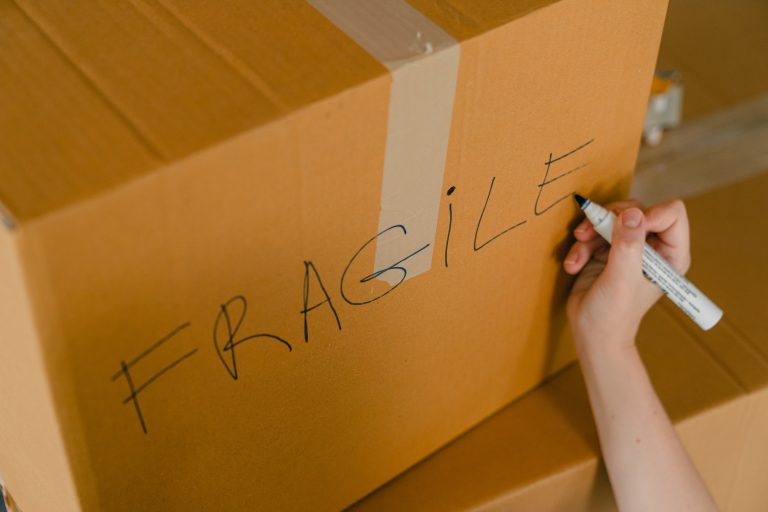
Brits are due to buy an extra 145 million presents online this year due to the Covid-19 crisis – meaning more than one billion presents will be purchased electronically.
Experts have calculated that the excess packaging from all the presents being delivered online is going to see an additional 150,000 trips by delivery vans – resulting in 86,488 tonnes of additional CO2 emissions.
With fewer families seeing each other and many shoppers avoiding the high street, there’s going to be increased pressure on e-commerce supply chains, with 66 per cent of adults buying more products online compared to the start of the Covid-19 pandemic.
In the previous five years, the average adult bought 16.86 presents online.
But 2020 will see this number rise to 19.64 – taking it from 883.5 million bought via the internet in total to more than 1.03 billion gifts this year.
It also emerged that 42 per cent admitted the environmental impact of their online shopping is not a priority for them this year, as they feel they have no other option.
Although 44 per cent still consider it important for packaging to be recyclable or reusable, and 42 per cent believe the wrapping should fit the size of the item.
Robyn MacDonald, packaging design consultant at DS Smith, which commissioned the research, said: “Christmas is usually a time where you come together with family and friends to celebrate, and with Covid-19 impacting our in-person celebrations, many are turning online to buy and send thoughtful presents to show their love.
“This, combined with the rapid growth of e-commerce over the lockdown period, is putting unparalleled pressure on the behind the scenes logistics operation.
“Where poorly designed packaging is used it has consequences – it leads to more journeys which means it takes longer for precious presents to get from A to B.
“Businesses – and Santa Claus – need to carefully consider how they pack goods effectively and with sustainable packaging materials to reduce waste over this year’s ‘COVID Christmas’, and help is at hand.”
It’s not just retailers and shoppers who will be worried about excess packaging either, with packaging experts at DS Smith calculating that the extra weight – when applied to every present he must deliver around the world – will slow Santa down by an hour and 24 minutes.
The study also revealed 42 per cent of adults still intend to deliver their gifts in person this year.
This could be down to a worry about it arriving in one piece as 43 per cent would request a refund were there any damage to their purchases.
And 44 per cent would expect a replacement free of charge, were anything not to be in ‘mint condition’ when it arrived.
More than a quarter (27 per cent) would also look to cancel an order if they found out it was going to arrive late, while 22 per cent would expect a refund.
The research has highlighted the importance of businesses getting deliveries right first time, with only one in six willing to buy again from a brand if their item was delivered damaged.
Just 17 per cent would also be a repeat customer if their package arrived late.
Robyn MacDonald, from DS Smith, added: “Our high-performance packaging solutions can ensure the best use of fibre, reducing the space needed and the number of breakages whilst also increasing sustainability.”
TOP TIPS TO STOP YOUR PACKAGE BREAKING THIS CHRISTMAS AND MINIMISE WASTED SPACE
*If you’re sending clothing alongside other, more breakable gifts, then use that to cushion the delicate item – socks work especially well for this. But we’d advise caution if the fragile item contains a liquid, as you risk ruining two presents if it does break.
*For non-fragile items, try and find boxes that snuggly fit your present in. Take note of the dimensions of any gifts – either by checking when you buy online or using an app on your phone to measure.
*If your item is more fragile then opt for a box that is a little bigger so you can create a ‘buffer’ or ‘crumple’ zone to protect your gift. Re-use newspapers and magazines to add cushioning too – lightly scrunched works most effectively.
*It’s important to ensure the box is securely closed, but don’t go overboard on the sticky tape – the recipient won’t be able to open it and 39 per cent of Brits have previously reported that they had hurt themselves trying to open a package.
*Produce makeshift dividers using spare cardboard if you are sending lots of small delicate items such as glasses.
*For awkwardly shaped presents, find a box that fits, and create a space buffer round the entire product which you can fill with lightly scrunched paper or shredded paper.
*Select the ‘this is a gift’ option and only get your gift sent once, as opposed to sending the present to yourself, wrapping and then re-sending to your family. This can halve the carbon emissions associated with delivery and ease the impact on postal services.
*If you can’t send it directly to the recipient, you can also re-use the boxes your items have been sent in, cutting down on materials used.
*Put a label on a package to indicate if it’s heavy or fragile.
ENDS


















